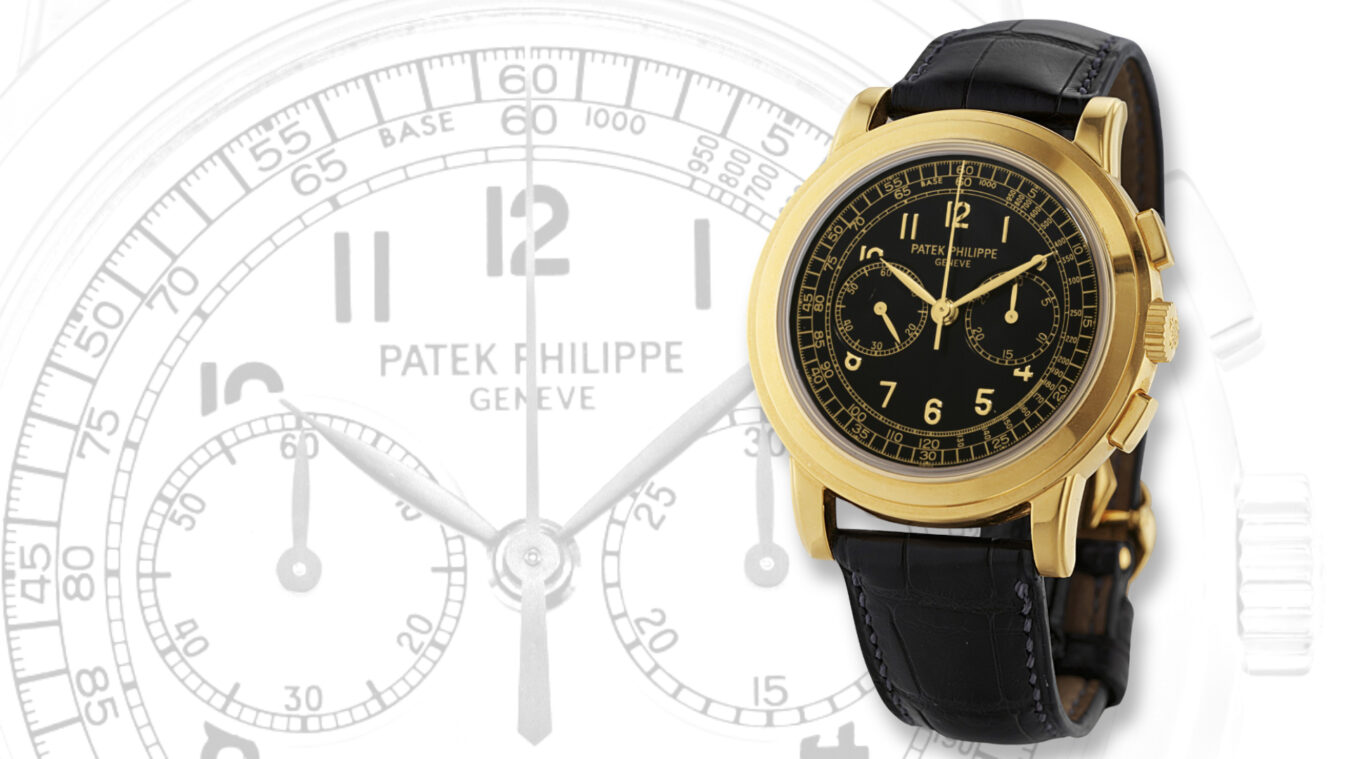The history of the officer watch is the history of the wristwatch. The officer-style case originates from the fact that early wristwatches were originally pocket watches, or ladies’ pendant watches, that were strapped to the wrist, initially by officers during World War I. At this time, trench warfare and the use of artillery relied on precision timekeeping. Officers had to check the time quickly, and not having to unbutton a coat and search for a pocket watch was literally lifesaving. A quick glance at their wrists was all that was needed to tell the time – and they could keep their eyes on the potential danger of battle. Owning a timepiece in the early 20th century was still the privilege of the officer class, hence why mostly officers had the source of time during WWI.

The style of the officer watch is based on early converted hunter case pocket watches. The hunter case cover as its name suggests, offered a level of protection from breakage when hunting – i.e. riding a horse at speed across fields and over fences that could easily result in a fall – and a shattered mineral glass dial. Moreover, while open-faced pocket watches traditionally had the winding crown at 12 o’clock, the hunting case pocket watch had the hinge of its cover at 9 o’clock and the winding crown at 3 o’clock – offering a much more convenient position for opening and winding a watch strapped to the wrist. Two strap lugs could be soldered to the case at 12 o’clock and 6 o’clock. Instead of spring bars, the straps would have been held on with screws. Modern officer-style watches are immediately distinguished by their hunter cover on the case back and the straight lugs and buckle with screws. A final nod to their early heritage is a Louis XV-style winding crown in the shape of a turban – the traditional style of a pocket watch’s winding crown. Ladies’ pendant watches were another popular conversion solution because a man’s pocket watch was mostly too large for the wrist.
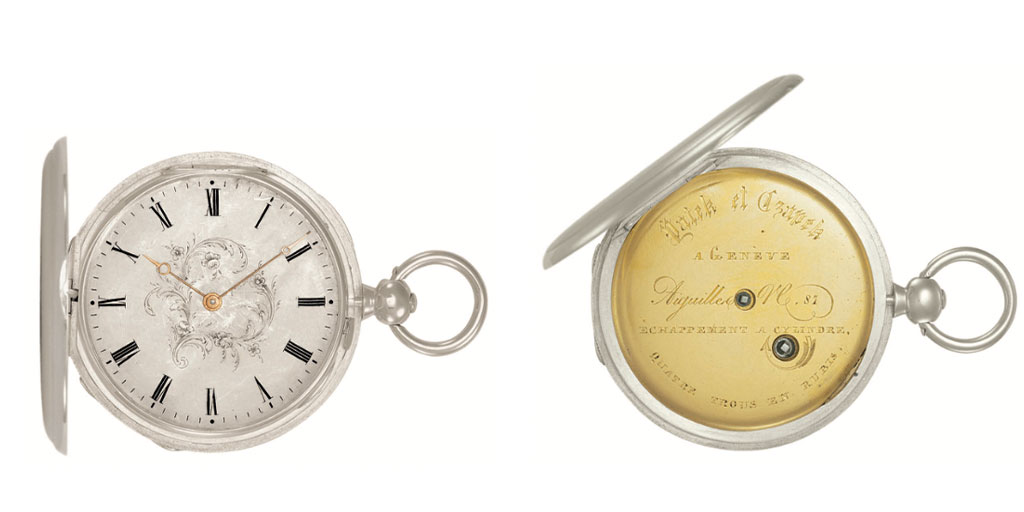
The original hunter pocket watch case cover on the back also had another, important role. In earlier key-wound pocket watches, the hinged case back of the watch revealed an additional inner case back, the cuvette, with holes in which to insert a key to wind and set the watch. The cuvette protected the movement from the owner inserting the key in a way that may cause damage. With the arrival of stem-winding – thank you Adrien Philippe! – the keyhole was no longer necessary, though the cuvette stayed on many high-quality pocket watches because it provided the movement with an extra barrier against dust and moisture. The cuvette also served a decorative function in which the manufacturer could engrave details about the watch, or a personal inscription could be added. Because sapphire crystal no longer requires a hunter case cover to protect the dial, the hunter case cover on modern officer watches is now on the back. As we will see when we look at Patek Philippe’s officer watches produced over the last 35 years, the hunter-inspired hinged back now covers either a cuvette with an inscription such as on the ref. 3960, or a sapphire crystal back through which to see the movement as on a ref. 5153.
Historians may be interested to learn that the first Swiss patent for a wristwatch was filed in 1880s. It was obtained by Albert Bertholet from Bienne in Switzerland on February 28, 1889. His drawings published in the patent number CH 576 had the same elements as what we would call an officer-style case today.
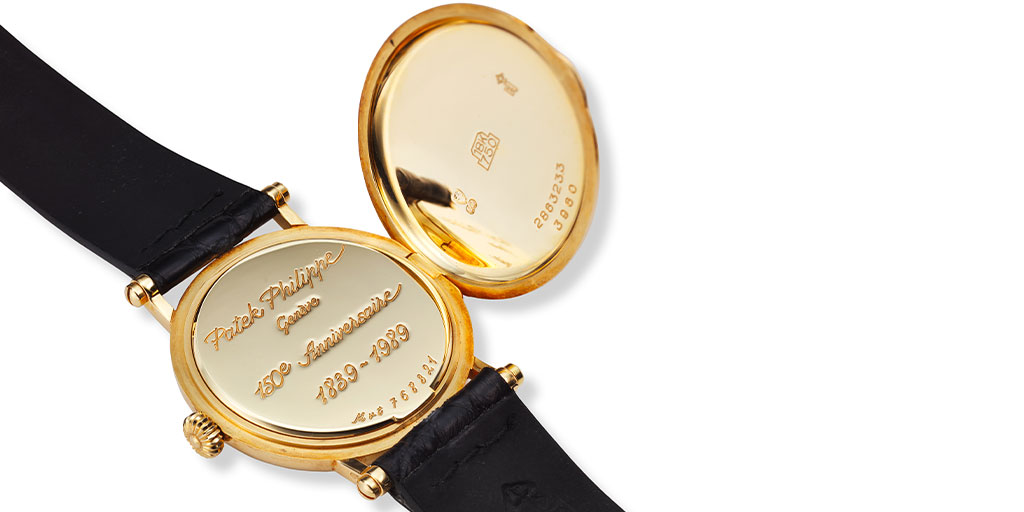
One thing that all Patek Philippe officer case timepieces have in common is the feel and sound of opening and closing the case. The subtle appeal of this case design can only be experienced when it is off the wrist. Apply a finger to the delicate lip on the case side, and the entire case back opens with an audible pop, revealing the inner beauty of the watch. Once the joy of observing this miniature marvel is complete, a flick of the thumb and forefinger closes the lid with a satisfying, crisp snap. An officers case provides a tactile appreciation of the casemaker’s craftsmanship. Working within a tolerance of hundredths of millimeters, the expert casemakers will have polished and adjusted, often for days, until the action and sound of opening and closing the case back are as they should be.

This elegant style of the officer case began its comeback in 1989 when Patek Philippe introduced a series of limited-edition, time-only watches to celebrate its 150th Anniversary. Called the Officer’s Campaign watch, the ref. 3960 was directly inspired by the rounded bezel and case band of the pocket hunter-style watches the front-line officers took to war in 1914. The hunter-style case back opens to reveal a cuvette protecting the movement which is engraved with the movement number and text commemorating the 150th year of Patek Philippe. As traditionally found on converted pocket watches, the lugs and the buckle have screw-pins securing the strap, and the crown is an elegant Louis XV turban-shape. The porcelain white dial highlights the black Breguet numerals and railway-track minute-scale also typical of early hunter case pocket watch dials. Patek Philippe produced 2000 ref. 3960 in 18K yellow gold, 150 in 18K white gold and 50 in platinum. Relatively few of these limited-edition timepieces have returned to the market: only an estimated 250 in yellow gold, 43 in white gold and a mere 15 in platinum.

The next officer-style case that Patek Philippe introduced was in1994 to house its first small complication with a hinged back. The ref. 5015 was made in less than 3000 examples during its run from 1994 until 1999. With its elegant, hinged case back, unusual, beaded bezel, and the ground-breaking 240 caliber, this reference was immediately appreciated and led to the ref. 5054 in 1999. Later, the moon phase with power reserve movement was used in Nautilus refs. 3712 and 5712.
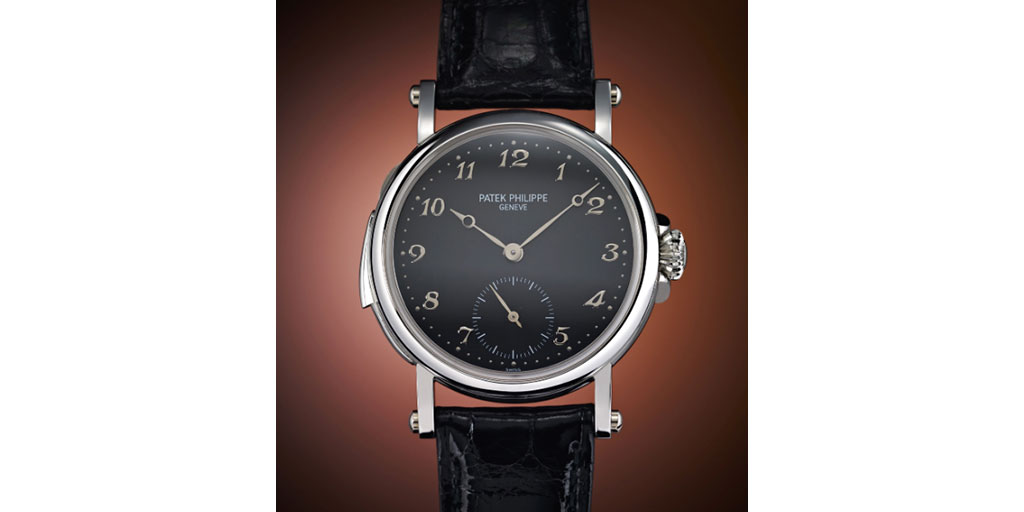
Continuing with an officer case to house a complication, in 1997, Patek Philippe introduced a very special limited edition to commemorate the opening if its new workshops in Plan-les-Ouates. Time that you can hear as well as see has been a Patek Philippe specialty since the company’s founding and so to celebrate the importance of bringing all its workshop together, the company created the minute repeater ref. 5029. To accommodate the slide for the minute repeater on the side of the case, the hinge of the case back opened under the winding crown at 3 o’clock instead of at 9 o’clock. This ingenious case design was made by the celebrated case maker Jean-Pierre Hagman whose case maker’s mark JHP is stamped on the inside of the hinged case-back.

JP Hagmann made all the most complicated watch cases for Patek Philippe, including all minute repeaters so it made sense that the design of the case was entrusted to him. John Reardon had the great pleasure of meeting with JP Hagmann recently in Geneva and he told him a little-known fact that distinguishes each of his watch cases: they all open to an angle of 82 degrees, because this, in his opinion is the best angle to view the movement or cuvette underneath! Only 10 ref. 5029 were made in 18K yellow gold, 10 in 18k rose gold and 10 in platinum.

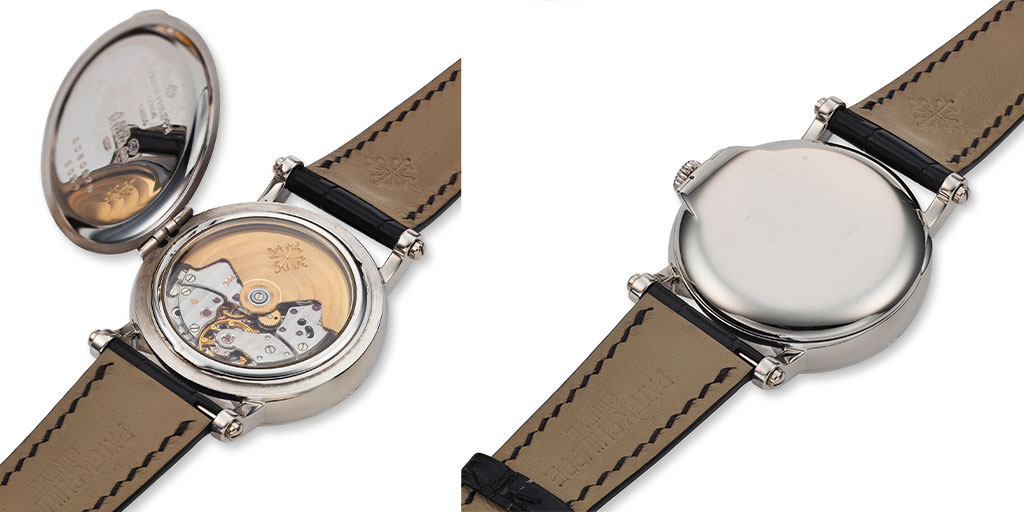
The following year in 1998, Patek Philippe introduced the ref. 5059. This was the first perpetual calendar to be housed in an officer case. Historically, it is worth noting that the ref. 5059 and 5050 are the first perpetual calendars with a sweep seconds hand to be produced since the refs. 2497 and 2438 in the 1950s. The ref. 5059 with its self-winding retrograde calendar stayed in production until 2006 when it was replaced by the ref. 5159 in 2008 with its 38 mm case which was 2 mm larger.
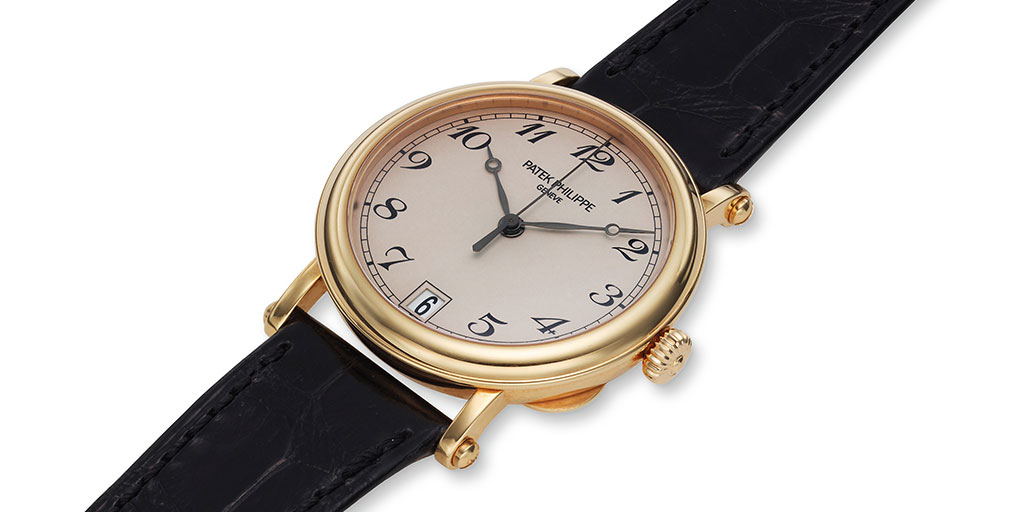
In 2001, Patek Philippe returned to making a time-only watch in an elegant officer case. The ref. 5053 was made between 2001 – 2005. To begin, it housed the self-winding caliber 315 190; in 2003, the second series housed the caliber 315 202. The “grené-argenté” dial with the date aperture at 6 o’clock featured the classic black Breguet numerals and outer seconds’ scale. In 2006, a limited-edition series of 25 pieces in 18K pink gold and 25 18K white gold were made for Hüber in Munich to celebrate its 150th anniversary. What differentiated this limited-edition series was the date at 3 o’clock and Roman instead of Breguet numerals.
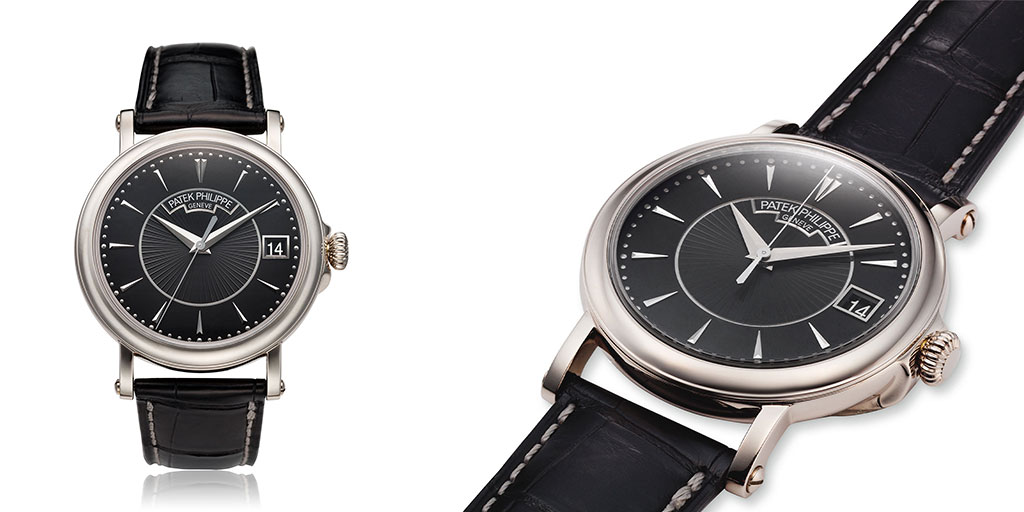
2009 was an important year for the company as it was the launch of the Patek Philippe Seal. Fearing it could have been overshadowed by the PP Seal, the ref. 5153J was launched to great fanfare. In fact, the watch release was billed a ‘matter of honor’ in respect to the officer case tradition. The press release eloquently stated, “As in all other officer’s wristwatches, one of the key assets of the Ref. 5153 is the case in 18K yellow gold with the hinged cover that protects the case back. It is one of the most elaborate horological constructions that are still being built. From the front, it reveals the classic sleekness of a Calatrava with a mirror-polished, rounded bezel. Only a few modest details suggest that it is an officer’s-style case: the straight lugs with the screwed strap bars, the knurled turban-style crown, and the small case extension ridge on the crown side. This element hides the hinge for the cover that protects the screwed case back with the sapphire window. Such details clearly manifest the precision, the care, and the skill with which the manufacture’s cases are made.” Featuring the automatic caliber 324 SC with center seconds, only the first few watches still had the Geneva Seal on the movement. All the first movements marked with the PP Seal begin with the number 5. In 2015, the ref. 5153-012G a limited edition of 80 pieces known as the ‘London Edition’ were produced in white gold.
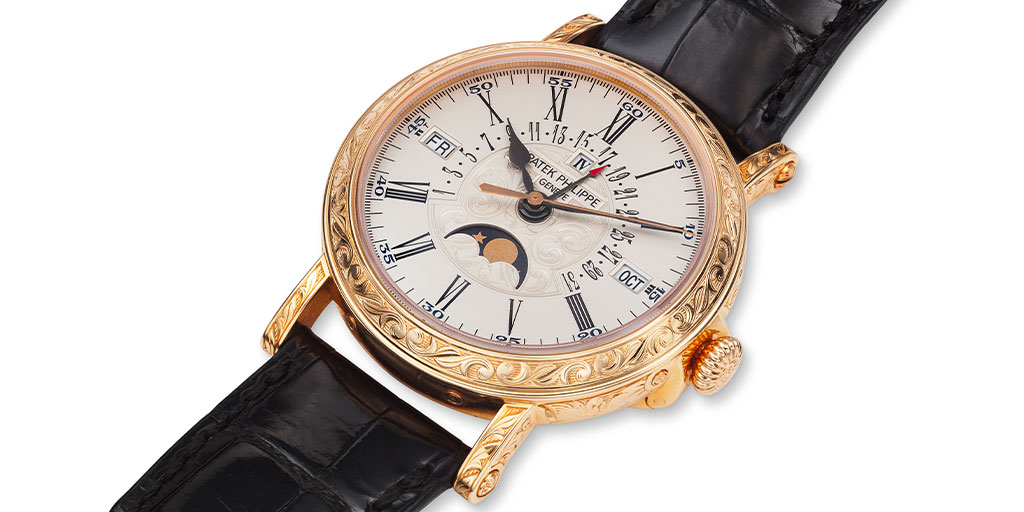
At BaselWorld in 2010, Patek Philippe announced the release of the ref. 5160 as part of its Rare Handcraft collection and only produced a small, undisclosed number. During its entire run, it is believed that less than 20 examples were made in 18K white gold, possibly even far fewer in rose gold. A Rare Handcraft from Patek Philippe is as its name implies rare. A Rare Handcraft from Patek Philippe with a complication is even more rare.
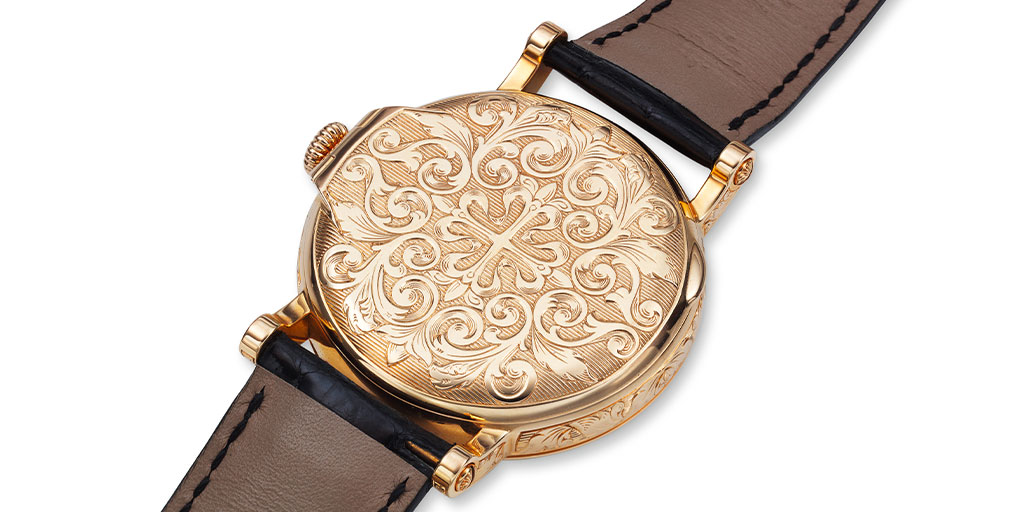
This special piece was housed in an officer case, entirely engraved by the hand of a master engraver. Even when opening the hinged case back, the careful eye inspects with appreciation the hand engraved foliate motif around the sapphire case back of the inner case. This exquisite, complicated watch in an officer case is still in production and a desired piece for any serious collector.
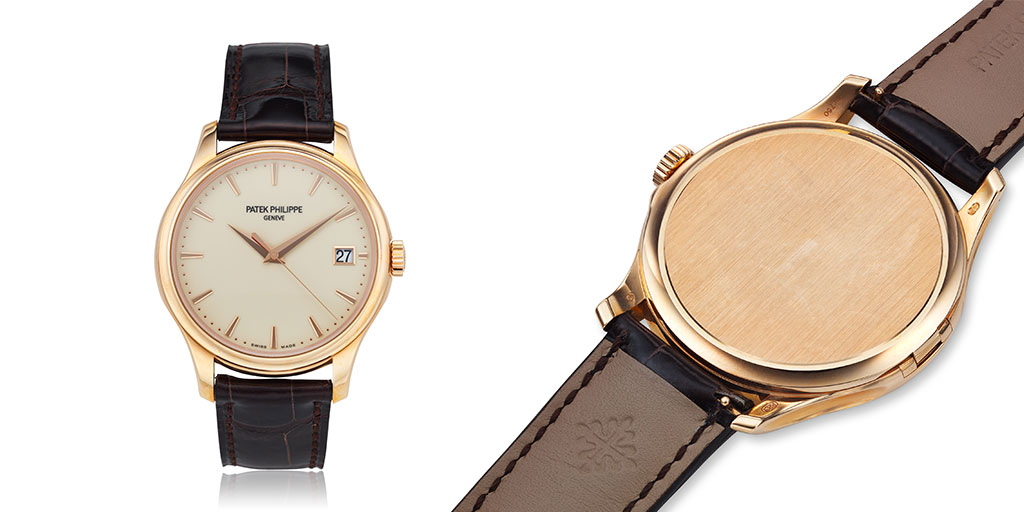
In 2013, Patek Philippe used the officer-style case as inspiration for a new Calatrava ref. 5227. Like the ref. 5153, a protective, officer-style case opens to reveal the movement under a sapphire crystal back. However, on this model, the hinge is completely concealed, invisible even to a watch connoisseur. It is so cleverly concealed that Philippe Stem, the honorary president of Patek Philippe could not detect the hinge on first sight when presented with the final model by his son Thierry. Yet what keeps this model strictly in the Calatrava family are the curved lugs, rather than straight officer-style, which give the watch a slimmer, more streamlined look.
Patek Philippe does not include a collection of officers’ watches, instead they find themselves among Calatrava and complicated collections. The ingenious cover and the architecture of the watch is typical of Patek Philippe’s innovative approach to watchmaking – i.e. innovation that builds on the past, whether it’s the hunting pursuits of the nineteenth century or trench warfare in the twentieth century when dust covers were more than just nice to have. The officers case takes the wearer on a journey back over time to the most momentous shift in personal timekeeping, when the hour of the day moved from the pocket to the wrist.
November 2024



